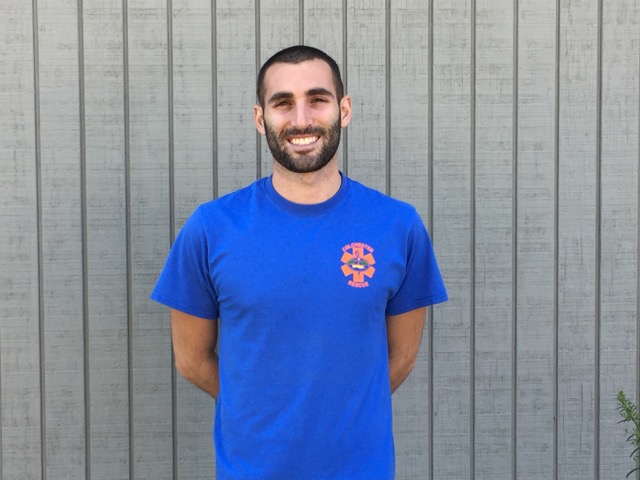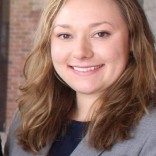(Photo: Courtesy of Imaging the World)
A college travel study trip to Liberia changed everything for Dr. Kristen DeStigter.
While an undergrad pre-med student in the 1980s at Calvin College, DeStigter traveled to Africa for a semester abroad program. For DeStigter, who grew up near Cleveland, it was her first time outside of the country.

“I thought the trip would be a good opportunity to learn outside of my little world, and going to Liberia was a real eye opener,” says DeStigter, Professor of Radiology at the UVM College of Medicine and co-founder of Imaging the World, an organization that integrates medical imaging in remote regions of the globe.
On that first trip to Liberia, DeStigter and another pre-med student traveled by bus to Monrovia, the capital of Liberia, to attend a medical lecture. While in the capital city, they visited a government-run hospital with a room for newborn babies whose mothers had died in childbirth. DeStigter recalls there being no resources to care for the babies.
Even worse, if no other family members came to claim the babies to take them home, the infants would often die in the hospital from lack of care.
“For someone coming from Cleveland, even the possibility of women dying in pregnancy was difficult for me to comprehend,” DeStigter says. “I realized then that I needed to do something with my life that was more than just becoming a doctor. I think that experience in Monrovia layered the framework for where I was going to go.”
The Work of Imaging the World
DeStigter founded Imaging the World in 2008 with Dr. Brian Garra, a radiologist who practiced at UVM Medical Center and is now Chief of Radiology Research at the Veterans Healthcare Administration in Washington, D.C.
Imaging the World uses ultrasound technology and special protocols that reduce the need for highly trained operators at the point-of-care, while still maintaining high diagnostic quality. Volume scans replace each still ultrasound image with a series of images that are gathered by sweeping the transducer across the organ or body area of interest.
Unlike static images, which provide only a few sample images of each organ, volume sweeps provide one image every millimeter ensuring that all of the required anatomy to make a diagnosis is included in the scan.
Trained people in remote areas can take the ultrasound images, compress them using specialized software, and send them via a cell phone modem to a network of Imaging the World experts who return their assessment back to the sender in the field by text message. Using this technology, providers in the field can make primary diagnoses at the bedside but have immediate back-up from the experts for problem cases or second look reads for quality assurance.
Building a Public Health Organization
While attending Case Western for medical school, DeStigter continued to travel to Africa, first as a medical student and later as a radiology resident to study parasitic diseases.
Her focus on providing ultrasounds in remote, poor regions first came about in Kenya. While conducting parasite research during the day, DeStigter participated in a health clinic for local people in the evenings. She said she noticed how helpful it was to have ultrasound technology available for a variety of medical issues, particularly for pregnant women. When she eventually met Dr. Garra, the plan for Imaging the World fell into place.
“During my medical career, I took a lot of little detours along the way including working in private practice radiology, but I always tried to keep my hands in public health,” she says. “We started talking about creating Imaging the World in 2005. But there wasn’t any funding for this idea, and it was all volunteers — people who were interested and gave a lot of their personal time. While working at UVM Medical Center, I spent my nights working on building the organization, and I had to learn a skillset that I never had before. For example, how do you create bylaws for an organization? How do you develop a board of directors? How do you register an NGO in a foreign country? All of these are things that a radiologist would typically never have to know.”
DeStigter credits a passionate team of people who dedicated their lives to making Imaging the World a reality. “This has not been done by me alone,” she says. “We’ve had an incredibly talented team of people who put their lives into this program.”
The Need for Ultrasound Screenings

The mortality rate during pregnancy in Uganda is 1 in 25. By comparison, it’s about 1 in 7,000 in the United States. Undetected complications that cause significant bleeding and delays in the birthing process contribute to Uganda’s high maternal mortality rate. Undiagnosed twins, breech presentation, and placenta abnormalities can cause these complications, and these conditions can be detected by ultrasound.
In Uganda, about 50 percent of women give birth at home with an unskilled attendant, and those deliveries tend to be more problematic, DeStigter says. If an ultrasound scan provided by Imaging the World detects a complication, she says those women are urged to give birth in hospitals and clinics, and not at home.
Imaging the World has worked to help lower the death in pregnancy rate in Uganda by incorporating ultrasounds early on in a woman’s pregnancy. The organization has seen in Uganda a 70 percent increase of women who come for prenatal care – and much of that success has been through community education as well as outreach to the male population.
“The men make the health care decisions in Uganda, and women are now bringing their husbands to the ultrasound appointments so they are aware of what’s happening,” says DeStigter. “We’ve done significant outreach and invited men to our community programs, and we help them understand that an ultrasound does not have the side effects that they feared, like skin burns, infertility or fetal death.”
A New Pilot Program Involving Pregnancy and Cardiology
In July, the Imaging the World team traveled to Uganda to begin a pilot program for pregnant patients with rheumatic heart disease, a chronic heart condition caused by rheumatic fever. The team also traveled to clinics and visited the Bwindi Nursing School where the organization has integrated ultrasound training into the three-year nursing curriculum. In a place where rheumatic heart disease is prevalent, DeStigter wonders whether Uganda’s high maternal mortality rate could partially be the result of undetected rheumatic heart disease. That question is the basis of the new pilot program.
Those who attended the trip in July for the pilot program included DeStigter, Dr. Friederike Keating, who is a cardiologist at UVM Medical Center, as well as a UVM College of Medicine student, a UVM radiology resident, and three local high school students. For the new pilot program, the next steps are to continue training students in echocardiography and begin collecting data in January to examine over the next couple of years.
Looking Ahead
The Imaging the World model has changed over time, increasing capacity and capability in-country to become a sustainable. Now, trained nurses can acquire and interpret images, as well as expand the program by teaching others locally in the protocols. DeStigter says the intent is for people in-country to ‘learn to fish’ and carry on the model.
Since 2010, DeStigter says Imaging the World has processed over 12,000 obstetric scans. The organization has added new uses for ultrasound, including gynecologic, breast, pediatric and abdominal scans. DeStigter sees the effort only growing from here.
“My goal was to develop something that made a big difference and was sustainable,” she says. “The other goal was to create something that was ‘plunkable’ – where we could take this model developed in Uganda and put it anywhere else in the world – even back to rural parts of the USA. That’s where we are today – we’ve been able to show that the art and science of diagnostic imaging can be advanced in new ways to increase access to affordable, quality care and improve people’s lives.”





